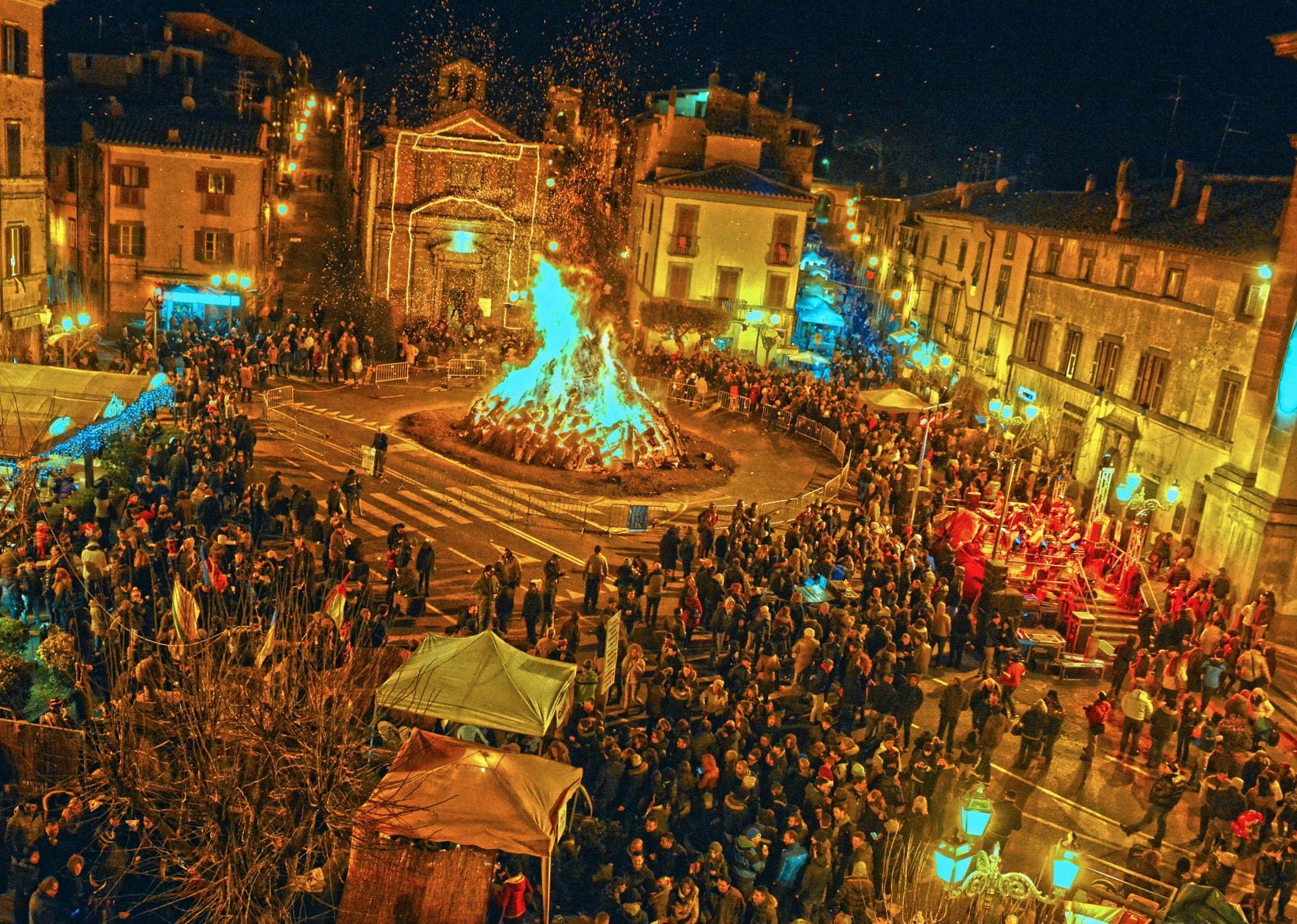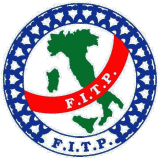
 Federazione Italiana Tradizioni Popolari
Federazione Italiana Tradizioni Popolari
Italian traditions: Winter Lights. The fires of Sant'Anthony Abbott
- WTI Magazine #99 Jan 20, 2018
-

 Federazione Italiana Tradizioni Popolari
Federazione Italiana Tradizioni Popolari
The winter time of the holiday calendar has always been marked by the presence of fire. A flame that warms bodies and hearts, a fire that cooks food consumed together, light that illuminates ancient rituals. Among the celebrations still alive in Abruzzo, the feast of St. Anthony Abbott, on January 17, exalts its flamboyant presence and elects it as the fulcrum of the rite.
Let us briefly recall the history of this great man. Antonio lived between 251 and 356 AD, and can be considered the patriarch of all monks. An egyptian born in Coma, already as a young man he decided to give the poor his numerous properties and live as a hermit.
In 305 he founded a first community in Fayum, followed by the community of Pispir, thus beginning monastic life by bringing together some monks who still did not follow precise rules. His wisdom made him famous throughout the country, many went to him for advice. His follower Atanasius (who later will become Saint) summoned him in the fight he had undertaken against the Aryans and it was Anthony who, at the age of ninety, held a sermon against them in Alexandria.
Later, Athanasius traced his biography. He died in the hermitage of Coltrum near the Red Sea on January 17, 356. The artistic iconography depicts him with a TAU-shaped cross and a pig. The animal, perhaps a symbol of evil, was associated with the privilege that the Hospitaller Brothers of St. Anthony had since the 17th century.
This privilege allowed fathers to collect the fat of the animal to be used as an ointment for a rash known as the "fire of Saint Anthony", against which the intercession of the saint was invoked. Another symbol is the torch that contains many meanings. His life, so simple but so suffering and meditated in prayer and desert solitude, greatly influenced, over the centuries to follow, the spread of the typical ideals of monasticism. St. Augustine, reading his biography by Saint Athanasius, inflamed himself to such an extent that he was convinced to take the big step in abandoning the life of the world to devote himself to the ascetic and evangelical life.
A figure so prominent in Christian asceticism, instead, found a much more humane place in the collective mentality of the people of Abruzzo, who lived faith and its manifestations in a more direct way. The holy white-haired pilgrim saint thus took the place of the most sacred image of him who, challenging the dangers of the environment and the temptations of the devil, with the perseverance of faith, won over the evil one.
One understands why the people needed points of reference that were close to their own cultural models; so, since it was next to the saint, the pig (let's remember, symbol of evil and in particular of lust) became the archetype of domestic animals that gradually will be portrayed in the iconography of the "holy ones" dedicated to St. Anthony. The medieval literature of Abruzzo recalls it, in particular, with two poems: the "leggenda de lo beatissimo egregio missere lu Barone santo Antonio" and the "Historia sancti Antoni", the first written by an ecclesiastical and the second with a bit of a jester taste.
The ancient monk will become a model, in popular imagination, of the primeval charity genius since the cadence of his feast in January is full of remote symbologies; the evolution of the archaic saint can be found in the other idol of the same name, Antonio da Padova, modern hero. To both the traditional culture will pair symbols: the pig and the fire to the saint of winter and the lily to that of June 13.
The founding elements of the rite and the feast of the Saint, remembered as the one who won the devilish temptations and the flames of hell, are numerous: we will pause to analyze the representation of the fires that in Abruzzo are called focaracci or focaroni. There are many more towns in this region that come alive to revive tradition and set up in advance stacks of wood often collected during the cleaning of fields and clearings and that, when they are lit, will illuminate squares and districts.
In many places in Abruzzo, the feast of the saint is characterized by these great bonfires which, in addition to recalling miraculous episodes, have an ancestral meaning of fires of purification remembered in the history of all religions. The Farchie di Fara Filiorum Petri, in the province of Chieti, is a typical example of this. The entire annual cycle that embraces the December festivities from the Immaculate Conception onwards, ending with the Carnival, is characterized by the presence of fires.
In ancient times the end of the year coincided with the Carnival that was anticipated at the end of December; we understand better all rituals of festivals and carnival revelry that insisted on a route of end-beginning principle. The old annual cycle ended and followed its renewal. Some rituals closely linked to man's work in that period and the festivities of some saints who were commemorated are also explained.
St. Anthony, hermit of the desert, is therefore inserted in the winter period that marks the piglet and the festivities of end-beginning principle of the year; it is no coincidence that the beginning of Carnival coincides with the 17th January, the day of the saint's celebration. The use of the preservation and consumption of pork (which is still processed in Abruzzo in the period between December and January) associates the animal with the saint and there are many references to generous meals based on this meat that we find in many "questing songs" peculiar to the preparatory cycle of the feast.
In Abruzzo, consumption of community meals during the commemoration of the saint is still widespread. The panarda in Villavallelonga and the cicerocchi (chicks of maize) in Collelongo, which are cooked inside the terracotta tiles or large copper boilers at the fire of the fireplace, and the sagne in Scanno, all places in the province of L'Aquila: this food define a cultural need, as well as cult, of the ancient meal in common that served to cement the social balance of the group.
The man, with his ability to create a universe full of protective systems, has seen in the figure of the pig above all the animal useful, or even precious, for his sustenance, giving to the diabolical interpretation of the animal figure almost a playful character and tied to strobes of songs that arouse hilarity. So this saint, who represented a great reference point at the dawn of monasticism and beyond, is for us a cheerful and calm image of the holy peasant surrounded by numerous farmyard animals, and main actor marking the time with his cockle while the devil teases him and the choir praises the great qualities.
Between the folds and rhythms of the party, however, you can see aspects of archaic celebrations, fires that recall the sunlight so far away in winter, light that illuminates the darkest season.